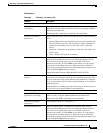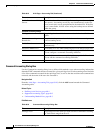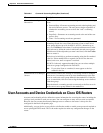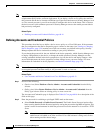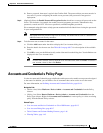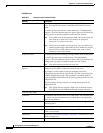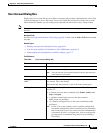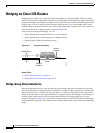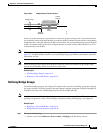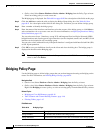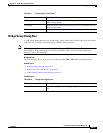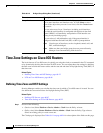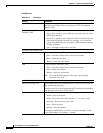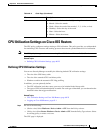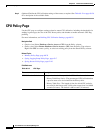
60-19
User Guide for Cisco Security Manager 4.4
OL-28826-01
Chapter 60 Router Device Administration
Bridging on Cisco IOS Routers
Figure 60-2 Bridge-Group Virtual Interface
When you enable routing for a given protocol on the BVI, packets coming from a routed interface that
are destined for a host in a bridged domain are routed to the BVI and then forwarded to the corresponding
bridged interface. All traffic routed to the BVI is forwarded to the corresponding bridge group as bridged
traffic. All routable traffic received on a bridged interface is routed to other routed interfaces as if it is
coming directly from the BVI.
Note BVI interfaces are configured using the Interfaces policy. See Defining Basic Router Interface Settings,
page 59-3. The BVI interface must have a corresponding bridge group with the same number; otherwise,
deployment will fail.
Note When the bridge group contains more than two interfaces, add a BVI interface to the group to help
prevent unicast flooding, which is a potential security issue.
Related Topics
• Defining Bridge Groups, page 60-19
• Bridging on Cisco IOS Routers, page 60-18
Defining Bridge Groups
You define a bridge group by selecting the L3 interfaces that are part of the bridge group and assigning
the group a number. All bridge groups in Security Manager perform integrated routing and bridging on
IP traffic only and use the standard Spanning Tree Protocol (IEEE 802.1D).
Note Use CLI commands or FlexConfigs to bridge other protocols, such as AppleTalk or IPX, and to use other
spanning tree protocols, such as VLAN-Bridge. Concurrent routing and bridging is not supported.
Related Topics
• Bridging on Cisco IOS Routers, page 60-18
• Bridge-Group Virtual Interfaces, page 60-18
Step 1 Do one of the following:
• (Device view) Select Platform > Device Admin > Bridging from the Policy selector.
Bridged
interfaces
Bridge group 1
Routed
interface
181105
BVI 1
10.0.0.2
10.0.0.1
E0
E2
E3
E1



